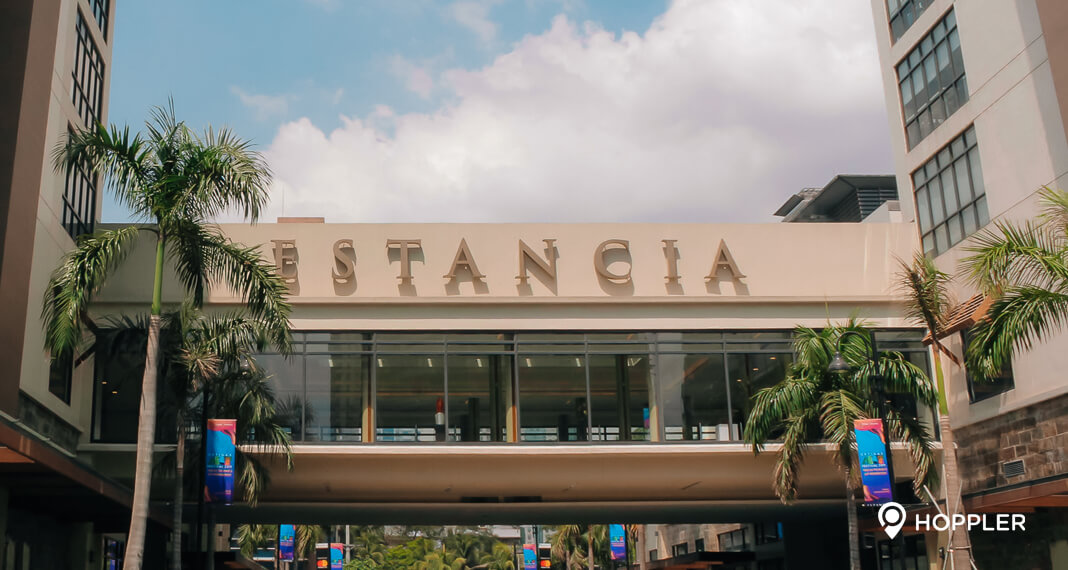How Economies Recover From Pandemics and Recessions
COVID-19 has brought a crisis which has made community lockdowns necessary and indefinite suspension of business operations indefinitely, resulting in massive amounts of unemployed citizens all over the world. While waiting for the vaccine, a deep recession or an economic contraction is inevitable.
Previous epidemics and disasters in history have also led to global economic downturns. While this pandemic and its effect on the global economy cannot be underestimated, history has proven that the world can bounce back. This article looks back at these events in history, discusses the impact, and reminds us that in spite of it all, we will see better days again.
The Great Depression
The Great Depression began in 1929, ending in 1939. This recession resulted in a decline in the Gross Domestic Product (GDP) of the US of more than 10% and peaked at an unemployment rate of 25.59%. According to the Bureau of Labor Statistics, the Consumer Price Index declined at 27% between the last quarter of 1929 until the first quarter of 1933.
While the world was still recuperating from the depressing effects of the first world war, the pains of the Great Depression lead to World War II. The economic downturn was caused by, among other things, the collapse of the stock market in 1929, the Federal Reserve’s reluctance in increasing money supply to combat deflation, and inflexible monetary policies.
Instead of saving money in the banks, people withdrew their cash and kept them in their homes due to panic and loss of confidence in financial institutions. Without enough money circulating, the economy would remain stagnant.
The real estate sector in the US was not spared. A study titled “Real Estate Prices During the Roaring Twenties and the Great Depression” by Tom Nicholas and Anna Scherbina revealed that the prices, as an example in Manhattan, peaked during the 1920s but plummeted by 67% at the end of 1932.
From 1929 to 1932, the value of high-end properties “strongly co-moved” with the stock market. This was because it was also in the 1920’s that investors were seeing nothing but attractive numbers and an exponential increase in value. When stock value fell during the depression, the investors who borrowed money from the banks were unable to pay. The banks eventually resorted to foreclosures. Homeowners couldn’t sell their properties because the values declined.
The 10-year financial crisis moved towards ending when U.S. President Franklin D. Roosevelt’s economic policy, the New Deal, was implemented. The New Deal “advocated government spending” to boost consumer demand and created 43 new agencies to support such. This revitalized the economy as it created jobs, allowed unionization, and provided unemployment insurance. (Amadeo, 2020)
In relation to the Philippines, portions of the economy remained strong during this period, according to a journal article in 1992 titled “The Philippine Economy During the World Depression of the 1930s”. Export earnings remained “buoyant” despite the world trade collapse. It cites that this was attributed to the “major surge in Philippine sugar exports” from 1932.
In addition, it suggests that the implications vary per class. Some certain groups or classes may have taken advantage of the depression’s effects on more vulnerable classes, in order to improve their way of living.
The Great Recession
The Great Recession began December 2007, lasting until June 2009. A credit crisis happened in 2007 as the real estate market collapsed. Years before this recession, the U.S. Housing Market was booming. It declined due high housing prices, lax lending practices, and increased subprime mortgages.
The real US GDP decreased in 2008’s four quarters until the 1st quarter of 2009. It shrank 0.1% in 2008 and 2.5% in 2009 (The Balance, 2020). This was said to be the worst recession since the Great Depression and declared a loss of over 8.7 million jobs in the U.S. alone. The stock market crashed in 2008. A number of prominent banks in the U.S. declared bankruptcy and the crisis eventually spread beyond the nation’s borders, most notably in Europe.
In the real estate market, its implications lasted until 2010 when a foreclosure crisis was experienced. Approximately 120,000 homes were seized in September 2010 in the USA.
Thanks to the “aggressive monetary policies” of the US Federal Reserve and other central banks across the globe, the recession eventually ended. In February 2009, a $787 billion stimulus package under the American Recovery and Reinvestment Act, helped ease the economy in to recovery. This funded new projects in education, infrastructure, and healthcare.
During the time of the Great Recession, the Philippine housing market was described as fragile. An article by Global Property Guide in 2008 reported that because of the Great Recession, the booming real estate sector in the Philippines significantly slowed down.
According to data from Colliers International, condominium prices peaked an average of 14.2% in 2007. A 3-bedroom luxury condo’s average price went 13.35% to the 2nd quarter of 2008. Because of the economic conditions during this time, housing demand weakened which was correlated to the lack of demand from Overseas Filipino Workers (OFW).
OFWs were the top buyers from 2006-2007 according to most real estate developers. They comprised 70-80% of the condominium owners in Metro Manila and subdivisions in Cavite, Laguna, Rizal, and Bulacan. However, during the writing of the said article in 2008, this demand waned and decreased by 20-30%. This can be accounted to the exchange rate movements and the overall financial struggle in 2008 worldwide.
However, demand returned, the economy strengthened, and the real estate sector recovered. From 1.2% in 2009, the Philippine economy had a strong upward trend of 7.6% in 2010. Investors exuded confidence again, resulting in construction of more condominiums and office buildings. The 9% vacancy rate in 2009 improved to 6% in 2010 and positively remained at 4% from 2011-2017.
The SARS Outbreak
The Severe Acute Respiratory Syndrome (SARS) pandemic is an appropriate example, as well, despite lasting for approximately six months within 26 countries. From November 2002 until July 2003, a total of 8,098 people contracted the disease. SARS had a mortality rate of 10% based on Centers for Disease Control and Prevention’s records.
More than the contagious pathogen itself, pandemics like this may take a toll on the economy. China, where the virus was said to have originated, was the 6th largest economy during that time but experienced a fall from 11.1% year over year in the first quarter of 2003 to 9.1% in the next three months (Lee, 2020). A study on the economic impact of SARS (Keogh-Brown, 2008) shows that the GDP plummeted 3.1% from the first quarter of 2003 to the second quarter.
Although its retail sector and travel industry had its slowest pace and was definitely its largest hit in 2003, China quickly recovered due to the steady trade volume in the same year.
Noted from a 2004 lecture about the impact of the SARS epidemic states that while most of the important events related to SARS happened in Asia, the global economy was affected in some capacity. A model estimated $80 billion loss on economic activities worldwide. Countries which are economically dependent on services such as travel like Hong Kong were “disproportionately affected”.
During the SARS outbreak, the Philippines had reported only a total of 12 probable cases with 2 deaths. Noting that the outbreak had a quite short timeline, this seems a reliable reason why the economy was not severely hit. Thus, the outbreak did not significantly affect any of the sectors. In fact, there was a growing average in the economy of 5.2% from 2002 to 2005. Along with the introduction of dual citizenship buyers of real estate, the overall growth of the country supported the real estate boom in the Philippines.
The COVID-19 Pandemic
Within 4 months, COVID-19 has affected a whopping number of 1.9+ million people and 100,000+ deaths worldwide (at the time this article was written). Countries have declared the beginning of bear markets in each economy.
The first country to be hit was China again. From January to February, its exports fell 17.2%. As overall consumer demand continued to decrease, many industries were affected especially in manufacturing, tourism, sales, and food industries. A forecast by Statistica as of March 2020 predicted that the United States GDP would decrease by 2.4%, while Russia’s GDP would decrease by 4.8%.
Economists from every affected country have warned of the upcoming recession. In the Philippines, a stimulus fund has been put into use against this pandemic to give aid to poor families and to support health workers and institutions.
Socio-economic chief Ernesto Pernia said that is enough for now but also implies that the economy could contract anytime depending on how long the Metro Manila lockdown will last due to slowed down, if not ceased, domestic activities. Tourism, trade, and remittances are among those hardest-hit.
Asian Development Bank predicts a PH GDP growth of 2.0% and will rebound in 2021 with 6.5%. This is assuming that the outbreak is somewhat contained by June of 2020.
This pandemic has become a test of resiliency in relation to investments. The real estate sector is one that is deemed to be resilient. JLL Global Research, dated from March 2020, supports this belief stating the real estate sector will still offer “attractive returns” compared to other asset classes.
Stakeholders within the real estate sector remain optimistic. A February 2020 Cushman & Wakefield report foresaw pain points during this pandemic, but “positive economic growth, employment growth and robust relative value” will ensue. These items are the “overall longer-term fundamentals for the commercial real estate sector”.
At the time of writing this article, China and South Korea, where the most number of cases were previously identified, had begun relaxing quarantine measures in order to move closer to normalcy. The rest of the world will follow.
While the world waits for a vaccine, albeit difficult, remaining positive during these trying times is not a far-fetched notion. Experience teaches us best. The occurrences mentioned above give hope that the crisis will end, and the global economy will come away stronger.
Whether you’re still thinking about buying a property or are already looking for condos for sale, Hoppler is here to provide a contactless solution for your post-crisis real estate needs. Contact us at +63 917 703 6568.



